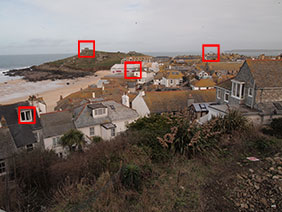Olympus E-PL2
-
-
Written by Gordon Laing
Quality
Olympus ‘PEN’ E-PL2 vs Panasonic Lumix DMC-GF2 vs Sony Alpha NEX-3 Real-life resolution
Olympus ‘PEN’ E-PL2 results : Real-life resolution /High ISO Noise
Olympus E-PL2 |
Panasonic Lumix GF2 |
Sony Alpha NEX-3 | ||
 | 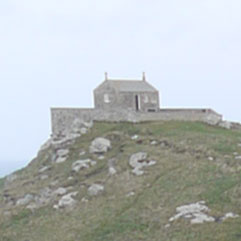 | 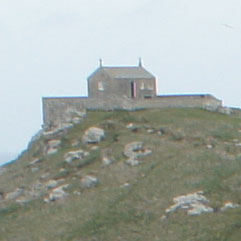 | ||
f5.6, 200 ISO |
f5.6, 100 ISO |
f5.6, 200 ISO | ||
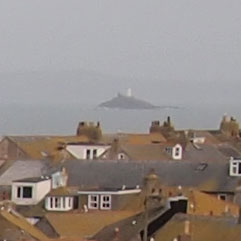 | 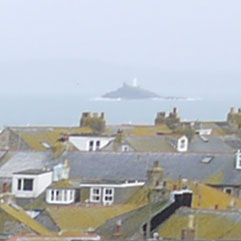 | 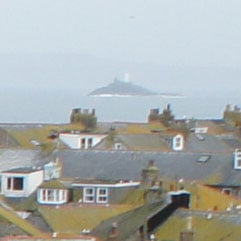 | ||
f5.6, 200 ISO |
f5.6, 100 ISO |
f5.6, 200 ISO | ||
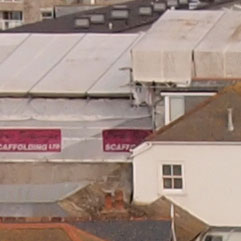 | 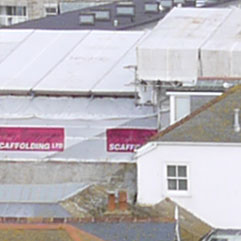 | 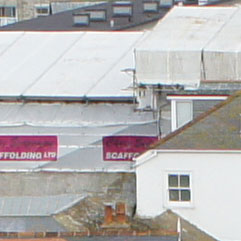 | ||
f5.6, 200 ISO |
f5.6, 100 ISO |
f5.6, 200 ISO | ||
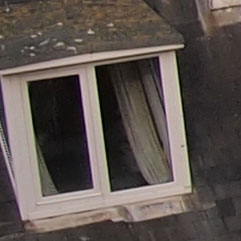 | 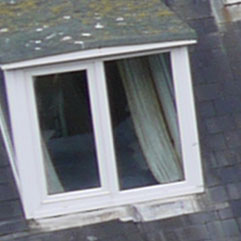 | 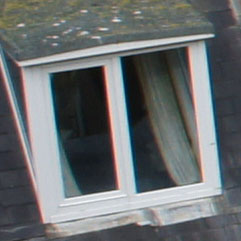 | ||
f5.6, 200 ISO |
f5.6, 100 ISO |
f5.6, 200 ISO |
Olympus ‘PEN’ E-PL2: JPEG versus RAW
We photographed the scene pictured above using the E-PL2’s RAW plus Large Fine JPEG mode, allowing us to directly compare images created from exactly the same data. Below are 100% crops taken from the original JPEG file alongside the RAW version, processed with the supplied OlympusViewer 2 1.1 software. Using Olympus Viewer’s default settings produced quite similar reults to the in-camera jpeg, which is perhaps not all that surprising as many of the parameters are set to ‘as shot’ For this comparison we turned off the noise filter and increased sharpness to +2. We also managed to eliminate the red fringing by setting the R/C chromatic aberration slider to -66. The results are punchier with more contrast than those produced by in-camera processing but, aside from eliminating the chromatic aberration, we’re not sure we’d call it an improvement because turning off the noise filter, not surprisingly, has led to a marked increase in the degree of visible noise. You don’t have to look hard to notice the granular quality of the sky in crops one and two. With a little more tweaking, possibly re-introducing noise filtering at the low setting, reducing the sharpening slightly and increasing contrast you could almost certainly achieve an improved result, but for our money the E-PL2’s in-camera processing is doing a good job. And let’s not forget that one of the main advantages of shooting RAW is the additional latitude it gives you to make tonal and colour adjustments, so it’s still well worth shooting using the RAW plus fine large jpeg setting. In the third column we’ve added crops from the RAW image shot with the Panasonic Lumix DMC-GF2. This file was processed using a trial version of Silkypix Developer Studio 4.0E as the GF2’s RW2 RAW files wouldn’t open in the version of Silkypix Developer Studio 3.1SE supplied with the camera. The file was produced using the software default settings. By comparison with both the Olympus E-PL2 crops and those from the GF2 in-camera JPEGs are quite soft and a significant improvement could definitely be made by tweaking the slikypix development settings. For a comparison of the Lumix GF2 in camera JPEGs with a tweaked RAW file take a look at our Panasonic Lumix GF2 full review outdoor test results page. Now let’s see how they compare at higher sensitivities in our High ISO Noise results. |
Olympus E-PL2 JPEG |
Olympus E-PL2 (RAW) |
Panasonic Lumix GF2 (RAW) | ||
 |  | 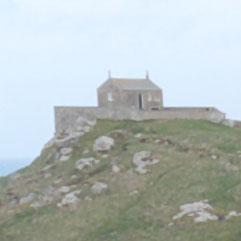 | ||
f5.6, 200 ISO |
f5.6, 200 ISO |
f5.6, 100 ISO | ||
 | 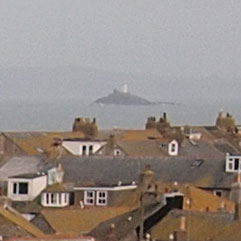 | 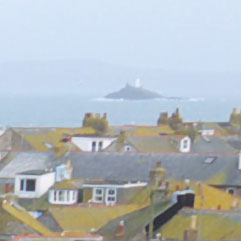 | ||
f5.6, 200 ISO |
f5.6, 200 ISO |
f5.6, 100 ISO | ||
 | 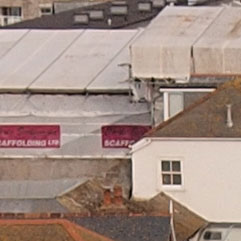 | 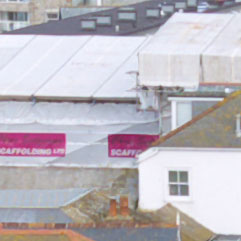 | ||
f5.6, 200 ISO |
f5.6, 200 ISO |
f5.6, 100 ISO | ||
 | 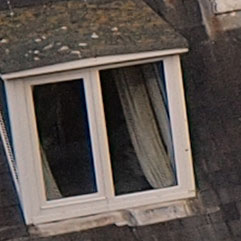 | 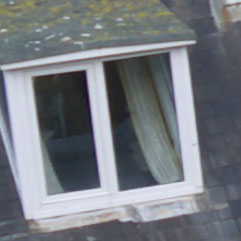 | ||
f5.6, 200 ISO |
f5.6, 200 ISO |
f5.6, 100 ISO |
Olympus ‘PEN’ E-PL2 results : Real-life resolution / High ISO Noise
To compare real-life performance with kit lenses at their maximum wide angle setting, we shot this scene with the Olympus ‘PEN’ E-PL2, the Panasonic Lumix GF-2 and the Sony NEX-3 within a few moments of each other. The E-PL2 was fitted with the Zuiko 14-42mm f3.5-5.6 II kit lens, the Panasonic GF2 with the Lumix G Vario 14-42mm f3.5-5.6 Mega O.I.S and the Sony NEX-3 with 18-55mm f3.5-5.6 OSS. The lenses on each camera were set to approximately the same field of view and all three were set to aperture priority mode with the ISO sensitivity manually set to the lowest available setting. The above image was taken with the Olympus E-PL2 and Zuiko 14-32mm f3.5-5.6 kit zoom set to its widest angle setting of 14mm (28mm equivalent.) The camera was mounted on a tripod and the image stabiliser was disabled. We took shots at each aperture setting and chose the one that looked best in quality terms. Reducing the aperture size results in quality improvements as only the central portion of the lens, which is less prone to physical aberrations, is used. Beyond a certain point however the improvement is offset by the effects of diffraction. The best results from all three cameras our test were achieved using an aperture of f5.6. All three cameras were set to use the RAW plus fine JPEG quality setting and the JPEGs were used for these comparisons. The file size of the 4032 x 2034 jpeg from the E-PL2 was exactly 6MB. The crops are taken from the areas marked with red rectangles and are presented here at 100%. Our test scene usually poses something of an exposure challenge for digital camera sensors, but on this particular day with bright, but overcast weather conditions the scene lacks its usual wide dynamic range. So this scene shouldn’t really pose much of a problem, but the E-PL2’s ESP metering has underexposed it a little. This isn’t the end of the world, because no shadow detail has been lost as a result. The histogram isn’t clipped on the left and in fact the level of detail in the foreground vegetation is actually pretty impressive. Possibly in response to criticism of the E-PL1’s poor dynamic range at it’s base sensitivity setting of 100 ISO, the E-PL2’s base sensitivity setting has been increased to 200 ISO and if this shot is anything to go by Olympus has made the right move. Despite the underexposure, shadow detail in this image is excellent. One other thing that’s noticeable about the E-PL2 image, particularly alongside those from the Panasonic Lumix GF2 and the Sony NEX-3 is the warm colours. This shot was taken with the default ‘Natural ‘picture mode and auto white balance. In general, results from the E-PL2 were on the warm side, but this is something you can easily do something about. Now let’s take a look at the crops. A first glance at these crops look very good indeed. Despite the dull weather conditions the Zuiko 14-42mm lens has produced a contrasty image with well defined edge detail across the frame. These crops don’t share the processed look we’ve seen on earlier PENs and there’s very little evidence of noise. In fact, overall there’s very little to find fault with and these results are a credit to both the quality of the new 14-42mm kit lens and the ability of the Four Thirds sized processor to deliver superior far exceeding the quality you’d expect from a compact. There is one cause for concern and that’s the slight red fringing evident in the fourth crop, most noticeable on the right side of the window frame. It is very marginal and it’s pretty much confined to this one area, but it does show that this kit lens isn’t totaly without its flaws. Compared with the Panasonic Lumix GF2, there’s very little in it, but overall we think the E-PL2 has a slight edge. The GF2 crops look less contrasty and softer than those from the E-PL2, but they are correctly exposed. The GF2 crops also look more processed and appear a little noisier. We’d also say that the crops from the Panasonic GF2 lack the consistency of those form the Olympus E-PL2. While the central crop, with the pink scaffolding banners look sharp and punchy, the other three, from closer to the frame edge are slightly softer. One area in which the Lumix GF2 scores over the E-PL2 is that there isn’t a hint of colour fringing anywhere. With a larger sized sensor you might expect the Sony NEX-3 to produce superior result to the micro Four Thirds cameras, but the differences aren’t that marked, at least at their lowest ISOs. The NEX-3 crops again look softer and less contrasty overall compared with those from the E-PL2 but, unlike the GF2 crops, they don’t look overly processed, so the gap here might well be down to processing differences. It’s quite likely that by altering the settings on one or other camera, or by processing the RAW files you could bring the results closer. What isn’t down to processing is the quite pronounced colour fringing on the NEX-3 crops. You can see a cyan fringe around the chapel in the top crop, and red fringing around the window on the crop from the other side of the frame. Again, you could almost certainly remove this by processing the RAW file, but look again and you’ll notive that these adge crops lack the sharpness, contrast and definition of the central crop. Like the Panasonic Lumix GF2’s kit lens, the Sony 18-55mm kit zoom can’t match the Zuiko 14-42mm for edge-to-edge consistency. Now let’s see how they compare at higher sensitivities in our High ISO Noise results. |
Olympus ‘PEN’ E-PL2 vs Panasonic Lumix DMC-GF2 vs Sony Alpha NEX-3 High ISO Noise
Olympus ‘PEN’ E-PL2 results : Real-life resolution / High ISO Noise
Olympus ‘PEN’ E-PL2 results : Real-life resolution / High ISO Noise
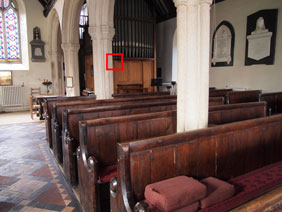 |
| ||||
To compare noise levels under real-life conditions we shot this scene with the Olympus E-PL2, the Panasonic Lumix GF2 and the Sony NEX-3 within a few moments of each other using their best quality JPEG settings at each of their ISO sensitivity settings.
The E-PL2 was fitted with the Zuiko 14-42mm f3.5-5.6 II kit lens, the Panasonic GF2 with the Lumix G Vario 14-42mm f3.5-5.6 Mega O.I.S and the Sony NEX-3 with 18-55mm f3.5-5.6 OSS. All three cameras were set to approximate the same field of view.
The above shot was taken with the the Olympus E-PL2 in Aperture Priority mode with the 14-42mm kit lens at its widest angle setting of 14mm (28mm equivalent). The ISO sensitivity was set to 200 ISO and the exposure was 1/5th of a second at f4.5. The crops are taken from the area marked with the red square and presented below at 100%.
At its lowest sensitivity setting of 200 ISO the E-PL2 produces really pleasing results. This crop is crisp, clean and natural looking with no evidence of noise. There’s good detail everywhere from the stone column on the left to the wood panelling on the right and edges are nice and crisp without any evidence of digital processing. Even at 400 ISO, the E-PL2 turns in an exceptionally good result. If you look at the vertical grooves in the wood panelling, they’re a little wobbly compared with the 200 ISO crop and you can also see evidence of noise in the panelling itself.
At 800 ISO things take a bit of a turn for the worse with a degree of softening, but the balance between noise and processing to reduce it is a good one. At 1600 ISO both the noise and the softening of image detail become progessively worse, even so, for 1600 ISO overall image quality is still pretty good. At 3200 ISO the noise gains the upper hand and the subject matter would need to be very close to your heart to put up with the loss of detail and generally poor image quality at this and the 6400 ISO sensitivity setting.
Compared with the Panasonic Lumix GF2 we reckon the Olympus E-PL2 has the upper hand all the way to 800 ISO. The crops from the Lumix GF2 are softer and show less detail, and comparing the 100 ISO Lumix GF2 crop with the 200 ISO crop from the E-PL2 we’d say the Olympus E-PL2 crop is markedly better. The 200 ISO Lumix GF2 crop is not only softer than the equivalent E-PL2 crop, it’s also noisier and looks more processed. At the higher sensitivity settings between 1600 and 6400 ISO we also think the Olympus E-PL2 crops have a distinct noise advantage over the GF2.
Like the Lumix GF2 the Sony NEX-3 produces slightly softer images than the Olympus E-PL2, but qualitatively, there’s little, if anything between them at low to mid sensitivities. The NEX crops are impressively noise-free at the lower sensitivities, and thanks to its larger sensor surface area, it enjoys a lead at the highest ISOs, although perhaps not as great as you’d expect.
Given its smaller sensor, the Olympus E-PL2 does an impressive job at the most common sensitivities. And, whereas earlier ‘PEN models we’ve tested have produced similar sharp punchy results, these crops look a lot more natural and show no evidence of aggressive image processing. If excellent low light performance is high on your list of priorities though, it’s worth bearing in mind the the NEX3/5 benefits from two composite modes – Hand-held twilight and Anti-motion blur – designed specifically for producing low-noise reults in low-light situations.
Now head over to our Olympus E-PL2 gallery to see some more real-life shots in a variety of conditions.
Olympus E-PL2 |
Panasonic Lumix GF2 |
Sony Alpha NEX-3 | ||
 | ||||
100 ISO Not available |
100 ISO |
100 ISO Not available | ||
 | 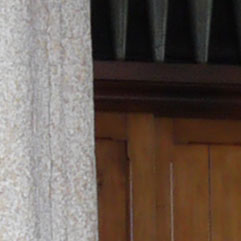 |  | ||
200 ISO |
200 ISO |
200 ISO | ||
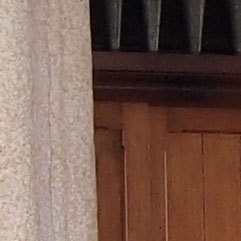 | 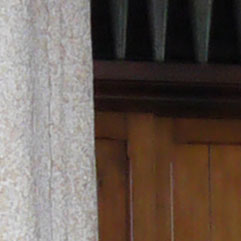 |  | ||
400 ISO |
400 ISO |
400 ISO | ||
 | 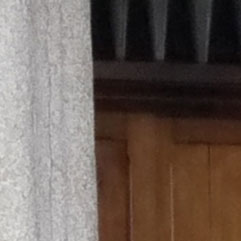 |  | ||
800 ISO |
800 ISO |
800 ISO | ||
 |  | 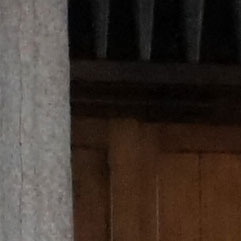 | ||
1600 ISO |
1600 ISO |
1600 ISO | ||
 |  |  | ||
3200 ISO |
3200 ISO |
3200 ISO | ||
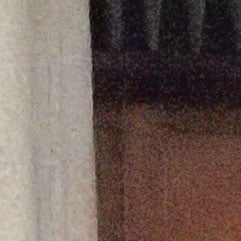 | 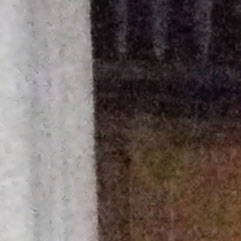 |  | ||
6400 ISO |
6400 ISO |
6400 ISO | ||
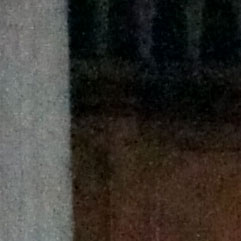 | ||||
12800 ISO Not available |
12800 ISO Not available |
12800 ISO |

